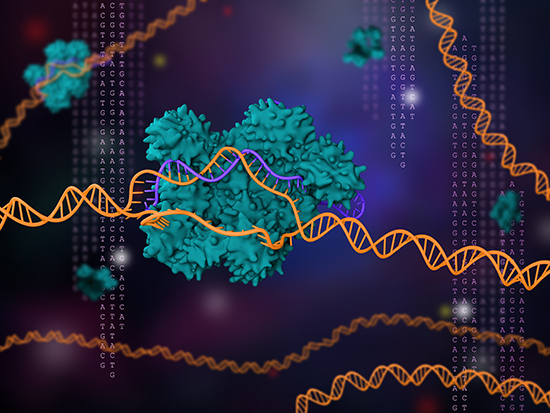
There are most-wanted lists, and there are most-wanted lists. For now, put aside the most-wanted list maintained by the FBI, and check out the one generated by a team of scientists based at the Wellcome Trust Sanger Institute. These scientists have assembled a rogues’ gallery of cancer genes—600 of them. The genes, the scientists say, show the most promise for drug development.
Scientists and pharmaceutical companies are exploring new targeted therapies that selectively kill cancer cells, leaving healthy tissue unharmed. Currently, producing new effective treatments is very difficult; it costs approximately $1–2 billion to develop a single drug, but around 90% of drugs fail during development. Therefore, selecting a good drug target at the beginning of the process can be seen as the most important part of drug discovery.
To focus drug developers on the worst of the worst, researchers from the Wellcome Sanger Institute, GlaxoSmithKline, EMBL-EBI, and Open Targets conducted one of the largest CRISPR screens of cancer genes to date, disrupting nearly 20,000 genes in more than 300 cancer models from 30 cancer types to uncover which genes are critical for cancer survival. The team focused on common cancers, such as lung, colon and breast, and cancers of particular unmet clinical need, such as lung, ovarian, and pancreatic cancer, where new treatments are urgently needed.
Scientists identified several thousand key cancer genes. Then they evaluated the genes with a newly developed prioritization system to narrow down the list.
Details of this work appeared April 10 in the journal Nature, in an article entitled, “Prioritization of cancer therapeutic targets using CRISPR-Cas9 screens.”
“We integrated cell fitness effects with genomic biomarkers and target tractability for drug development to systematically prioritize new targets in defined tissues and genotypes,” the article’s authors wrote. “We verified one of our most promising dependencies, the Werner syndrome ATP-dependent helicase, as a synthetic lethal target in tumors from multiple cancer types with microsatellite instability.”
The team found that cancer cells with a faulty DNA repair pathway, known as microsatellite unstable cancers, require WRN for survival. Microsatellite instability occurs in many different cancer types, including 15% of colon and 28% of stomach cancers. The new identification of WRN as a promising drug target offers an exciting opportunity to develop the first cancer treatments to target WRN.
“What makes this research so powerful, is the scale,” said Professor Karen Vousden, Cancer Research UK’s chief scientist. “CRISPR provides a unique tool to accelerate discovery of oncology drug targets, and this study is a salient leap in a positive direction.
“But we should remember that studying cells in the lab doesn’t always reflect the complexities of cancer in the human body and so will not necessarily reflect how someone will respond to a drug. This work provides some excellent starting points and the next steps will be a thorough analysis of the genes that have been identified as weaknesses in this study, to determine if they will one day lead to the development of new treatments for patients.”
Besides prioritizing cancer targets, the CRISPR screens described in the current study could help fill out the Cancer Dependency Map, a detailed rulebook of precision cancer treatments to help more patients receive effective therapies.
“The Cancer Dependency Map is a huge effort to identify all the weaknesses that exist in different cancers so we can use this information to empower the next generation of precision cancer treatments,” explained Mathew Garnett, Ph.D., co-lead author from the Wellcome Sanger Institute and Open Targets. “Ultimately, we hope this impacts on the way we treat patients, so many more patients get effective therapies.
“In the meantime, this tool will be freely available for scientists across the world to understand what makes a cancer a cancer, and how we might target different types of cancers much more effectively than we do today.”













